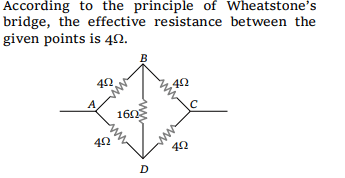1.The equivalent resistance between points A and B
of an infinite network of resistances each of 1 Ω
connected as shown, is

a) Infinite
b) 2 Ω
c) \[\frac{1+\sqrt{5}}{2}\] Ω
d) zero
Explanation:
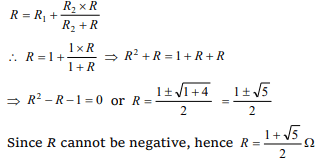
2.A copper wire of resistance R is cut into ten parts
of equal length. Two pieces each are joined in
series and then five such combinations are joined
in parallel. The new combination will have a
resistance
a) R
b) \[\frac{R}{4}\]
c) \[\frac{R}{5}\]
d) \[\frac{R}{25}\]
Explanation:
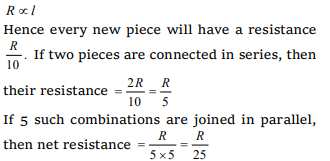
3.A wire has resistance 12 Ω. It is bent in the form
of a circle. The effective resistance between the
two points on any diameter is equal to
a) 12 Ω
b) 6 Ω
c) 3 Ω
d) 24 Ω
Explanation:
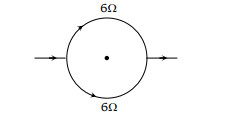

4. Three resistors each of 4 Ω are connected
together to form a network. The equivalent
resistance of the network cannot be
a) 1.33 Ω
b) 3.0 Ω
c) 6.0 Ω
d) 12.0 Ω
Explanation:
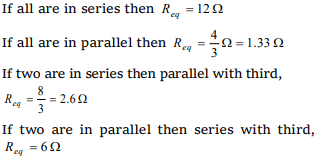
5. In the circuit shown below, the cell has an e.m.f.
of 10 V and internal resistance of 1 ohm. The other
resistances are shown in the figure. The potential
difference \[V_{A}-V_{B}\] is

a) 6 V
b) 4 V
c) 2 V
d) -2 V
Explanation:
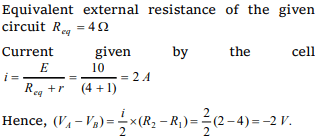
6.A wire of resistance R is cut into ‘n’ equal parts.
These parts are then connected in parallel. The
equivalent resistance of the combination will be
a) nR
b) \[\frac{R}{n}\]
c) \[\frac{n}{R}\]
d) \[\frac{R}{n^{2}}\]
Explanation:

7. The resistance between the terminal points A and
B of the given infinitely long circuit will be
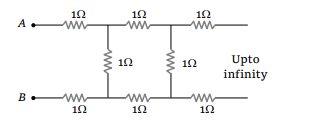
a) \[\left(\sqrt{3}-1\right)\]
b) \[\left(1-\sqrt{3}\right)\]
c) \[\left(1+\sqrt{3}\right)\]
d) \[\left(2+\sqrt{3}\right)\]
Explanation:

8. What is the current (i) in the circuit as shown in
figure
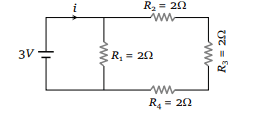
a) 2 A
b) 1.2 A
c) 1 A
d) 0.5 A
Explanation:


9. n equal resistors are first connected in series and
then connected in parallel. What is the ratio of
the maximum to the minimum resistance
a) n
b) \[\frac{1}{n^{2}}\]
c) \[n^{2}\]
d) \[\frac{1}{n}\]
Explanation:

10. A uniform wire of 16 Ω is made into the form of a
square. Two opposite corners of the square are
connected by a wire of resistance 16 Ω . The
effective resistance between the other two
opposite corners is
a) 32 Ω
b) 20 Ω
c) 8 Ω
d) 4 Ω
Explanation:
